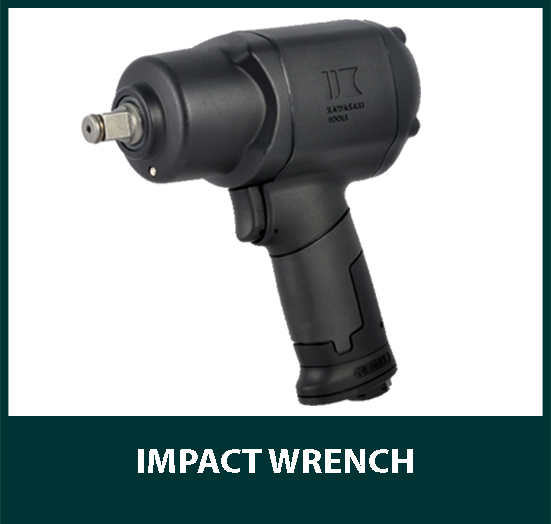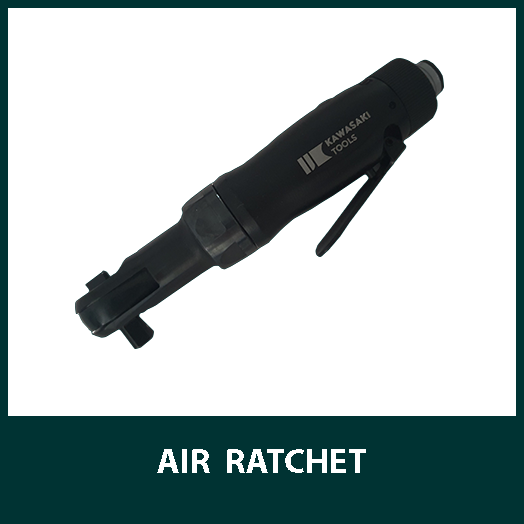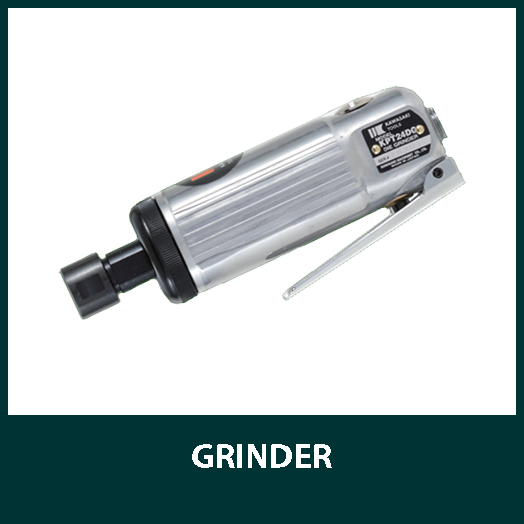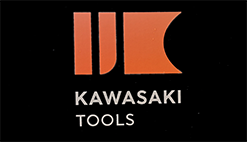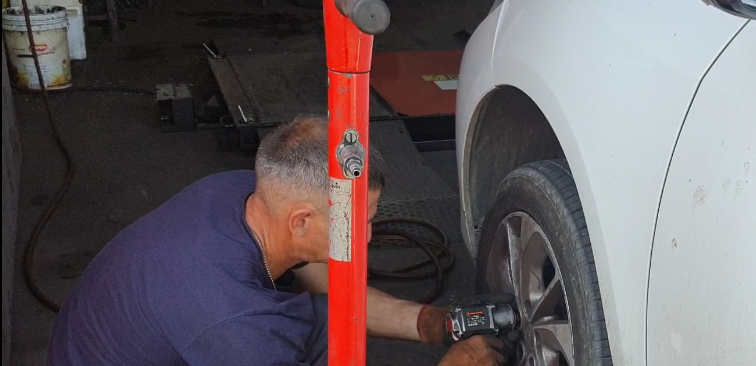AIR TOOLS
Pneumatic tools
Pneumatic tools have become an indispensable part of various industries, offering power, precision, and efficiency in a wide range of applications. from construction sites to automotive workshops, these tools have revolutionized the way we work. in this blog, we will explore the different branches where pneumatic tools are commonly used and delve into why professionals choose them over other alternatives.
Pneumatic tools are extensively used in the construction and carpentry industries for their power and versatility. nail guns, staple guns and framing guns, are just a few examples of pneumatic tools that make tasks such as, fastening, framing and roofing much quicker and easier. the compressed air used in these tools, provides consistent power, reducing the effort required by the user and increasing productivity on the job site.
In the automotive and manufacturing sectors, pneumatic tools are the go-to choice for assembly, maintenance, and repair work. Impact wrenches, air drills and pneumatic sanders are commonly used in these industries, due to their ability to deliver high torque and speed. pneumatic tools are lightweight and compact, allowing technicians to work efficiently in tight spaces without compromising on power.
The aerospace and engineering fields require precision and accuracy, and pneumatic tools deliver just that. rivet guns, air hammers, and pneumatic grinders are extensively used in aircraft assembly and maintenance. These tools ensure precise fastening, smooth surface finishing, and efficient material removal, making them essential for these industries.
The Air Ratchet Revolution
In the world of automotive maintenance and mechanical repairs, efficiency and precision are paramount. One tool that has become indispensable in the toolkit of professionals and DIY enthusiasts alike is the air ratchet. This compact powerhouse is transforming the way we approach tightening and loosening bolts, making tasks faster, easier, and more accurate. In this blog, we’ll delve into the world of air ratchets, exploring their features, applications, and the advantages they bring to the table.
What is an Air Ratchet?
An air ratchet, also known as a pneumatic ratchet, is a versatile hand tool powered by compressed air. It’s designed to perform the same tasks as a traditional hand ratchet but with the added benefits of speed and efficiency. The tool’s ratcheting function makes it simple and quick to tighten or loosen nuts and bolts in tight places.
Key Features
Power and Speed
Air ratchets are known for their impressive power-to-weight ratio. They deliver high torque output, making them ideal for tackling tough bolts.
The pneumatic power source ensures rapid rotation, significantly reducing the time needed to complete tasks.
Compact and Lightweight
Air ratchets are designed to be compact and lightweight, allowing for easy maneuverability in tight spaces.
The ergonomic design minimizes user fatigue during prolonged use, increasing overall efficiency.
Versatility
These tools come with a variety of socket sizes, allowing users to handle a wide range of bolt and nut sizes.
Some models feature adjustable torque settings, providing users with control over the tightening force.
Durability
Air ratchets are renowned for their robust construction, which makes them resistant to extensive use in industrial environments.
Applications
Automotive Repairs
Air ratchets are a staple in automotive workshops, where they are used for tasks such as removing and installing spark plugs, engine components, and other fasteners.
Construction and Carpentry
In construction, air ratchets are employed for assembling and disassembling structural components, such as steel beams and scaffolding.
Industrial Maintenance
Industries rely on air ratchets for routine maintenance and repair work on machinery and equipment.
DIY Projects
Hobbyists and DIY enthusiasts appreciate air ratchets for their ease of use and ability to streamline various home improvement projects.
Advantages
Time Efficiency
Air ratchets dramatically reduce the time needed to complete tasks compared to manual alternatives.
Precision
The ratcheting mechanism allows for precise control over the tightening or loosening process, minimizing the risk of over-torquing.
Accessibility
The compact size and versatile design of air ratchets make them suitable for reaching bolts in confined or hard-to-reach spaces.
Reduced Physical Strain
With pneumatic power doing the heavy lifting, users experience less physical strain, promoting comfort during extended use.
Conclusion
The air ratchet has undoubtedly revolutionized the way we approach fastening tasks. Its combination of power, speed, and precision has made it an indispensable tool in various industries. Whether you’re a do-it-yourselfer or a professional mechanic, getting an air ratchet will greatly increase the productivity and efficacy of your labor. We may anticipate even more advancements in the field of pneumatic tools as technology develops, which will further change the face of mechanical work.
The Comprehensive Guide to Pneumatic Tools: Unleashing the Power of Air for Precision and Efficiency
In the realm of modern industrial and automotive applications, the utilization of pneumatic tools, commonly known as air tools, has become synonymous with precision, power, and efficiency. This guide aims to delve into the intricacies of these air-powered wonders, exploring their functionality, advantages, and diverse applications across various industries.
Understanding Pneumatic Tools
Pneumatic tools, at their core, operate through the utilization of compressed air as a driving force. The compressed air, typically generated by a specialized compressor, is channeled into the tool, where it powers a pneumatic motor. This ingenious design allows pneumatic tools to execute a diverse range of tasks, from drilling and fastening to sanding and painting, with remarkable precision and efficiency. The fundamental appeal of these tools lies in their lightweight construction, making them ergonomic and easy to handle for operators. This, coupled with their impressive power-to-weight ratio, has propelled pneumatic tools to the forefront of various industries.
Widely embraced in manufacturing, construction, automotive, and maintenance sectors, pneumatic tools have become synonymous with enhanced productivity and accuracy. Their lightweight nature minimizes operator fatigue during prolonged use, while the consistent power output ensures reliable performance in demanding applications. The adaptability of pneumatic tools to different tasks and their robust design contribute to their indispensability in a variety of professional settings, where efficiency and precision are paramount. As technological advancements continue to refine these tools, the future promises even greater innovations in pneumatic technology, further solidifying their crucial role in modern workplaces.
Key Components
The pivotal components within pneumatic tools collectively contribute to their efficient operation. Central to their functionality is the pneumatic motor, a sophisticated mechanism designed with precision to convert compressed air into mechanical energy. This conversion is crucial for driving the various functions of the tool, enabling it to perform tasks with accuracy and power.
Compressors stand as the driving force behind pneumatic tools, providing a steady and controlled supply of compressed air. These compressors are engineered to generate and maintain the necessary air pressure required for optimal tool performance. The continuous stream of pressurized air, directed by the compressor, is the lifeblood that powers pneumatic tools through their diverse applications.
Within the intricate design of pneumatic tools, valve systems play a critical role. These systems meticulously regulate the airflow, allowing for fine-tuned control over the tool’s speed and torque. The precision offered by these valves is essential for adapting the tool to different tasks, ensuring that operators can achieve the desired level of power and accuracy. In essence, the seamless interaction between the pneumatic motor, compressor, and valve systems forms the foundation of a pneumatic tool’s capability, making it a reliable and versatile asset in professional settings.
Advantages of Pneumatic Tools
Power-to-Weight Ratio
One of the standout features of pneumatic tools is their exceptional power-to-weight ratio, a key factor contributing to their widespread adoption in various industries. This ratio signifies the amount of power a tool can generate in relation to its weight, making pneumatic tools notably lightweight while still delivering impressive force. This characteristic renders them ideal for applications where portability and maneuverability are paramount, allowing operators to wield powerful tools without sacrificing ease of use or agility, a critical advantage in dynamic work environments.
Consistent Power Output
In contrast to electric tools that may be susceptible to power fluctuations, pneumatic tools exhibit a consistent power output. The reliable and steady stream of compressed air ensures that these tools maintain a constant level of performance, a crucial attribute in demanding work environments. This consistency not only enhances the precision of tasks but also contributes to the longevity of the tools, as they operate under more stable conditions, minimizing wear and tear associated with power irregularities.
Durability
Pneumatic tools stand out for their durability, a quality derived from their design with fewer moving parts and reduced heat buildup during operation. The simplicity of their mechanical structure not only contributes to a longer lifespan but also makes maintenance more straightforward. This durability factor, coupled with the inherent resistance to overheating, positions pneumatic tools as a cost-effective choice for businesses, as they often require less frequent repairs and replacements compared to their electric counterparts, ultimately contributing to increased operational efficiency and reduced downtime.
Reduced Vibrations
The design of pneumatic tools incorporates a noteworthy feature that sets them apart—the reduction of vibrations during operation. This inherent characteristic is a result of the tool’s mechanism, which efficiently absorbs and dissipates vibrations generated during use. The consequence of this design is twofold: first, it contributes significantly to operator comfort by minimizing the transmission of vibrations to the user’s hands and body. This is particularly crucial during prolonged use, where operator comfort directly influences work efficiency. Second, the reduction in vibrations plays a key role in minimizing operator fatigue, a factor that is pivotal in maintaining a high level of productivity. By mitigating the physical stress imposed on the user, pneumatic tools not only enhance the overall working experience but also contribute to safer and more precise operation, making them an indispensable choice in professional settings.
Applications Across Industries
Automotive
Pneumatic tools are widely employed in auto repair shops for tasks such as tire inflation, impact wrenching, and paint spraying.
Manufacturing
From assembly lines to precision machining, pneumatic tools play a pivotal role in enhancing production efficiency and ensuring quality.
Construction
Pneumatic nailers, drills, and grinders are staples on construction sites, offering the power needed to tackle robust materials with ease.
Maintenance
In maintenance and repair scenarios, pneumatic tools facilitate swift and precise tasks, ranging from bolt tightening to equipment servicing.
Safety Considerations
While pneumatic tools offer numerous advantages, safety remains a paramount concern. Adequate training, proper tool maintenance, and the use of appropriate personal protective equipment are essential to mitigate risks associated with the operation of these powerful tools.
Conclusion
Pneumatic tools stand as a testament to the marriage of engineering innovation and practical utility. Their versatility, reliability, and efficiency make them indispensable across a spectrum of industries, empowering professionals to accomplish tasks with unparalleled precision and speed. As technology grows, the future holds exciting possibilities for the evolution of pneumatic tools, further solidifying their place as indispensable instruments in the modern workplace.
